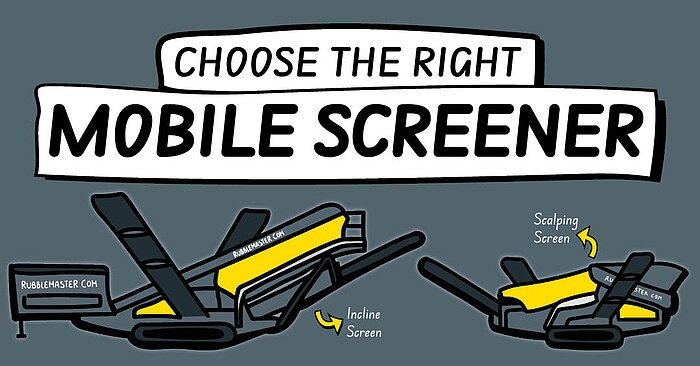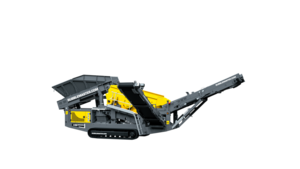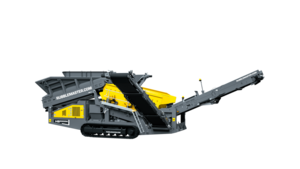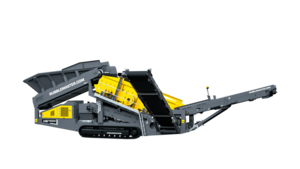Mobile scalping screens can be equipped with an apron or belt feeder. Their primary purpose is to convey the material inside the feed hopper onto the screen deck. Both have their pros and cons depending on the application.
Apron Feeder
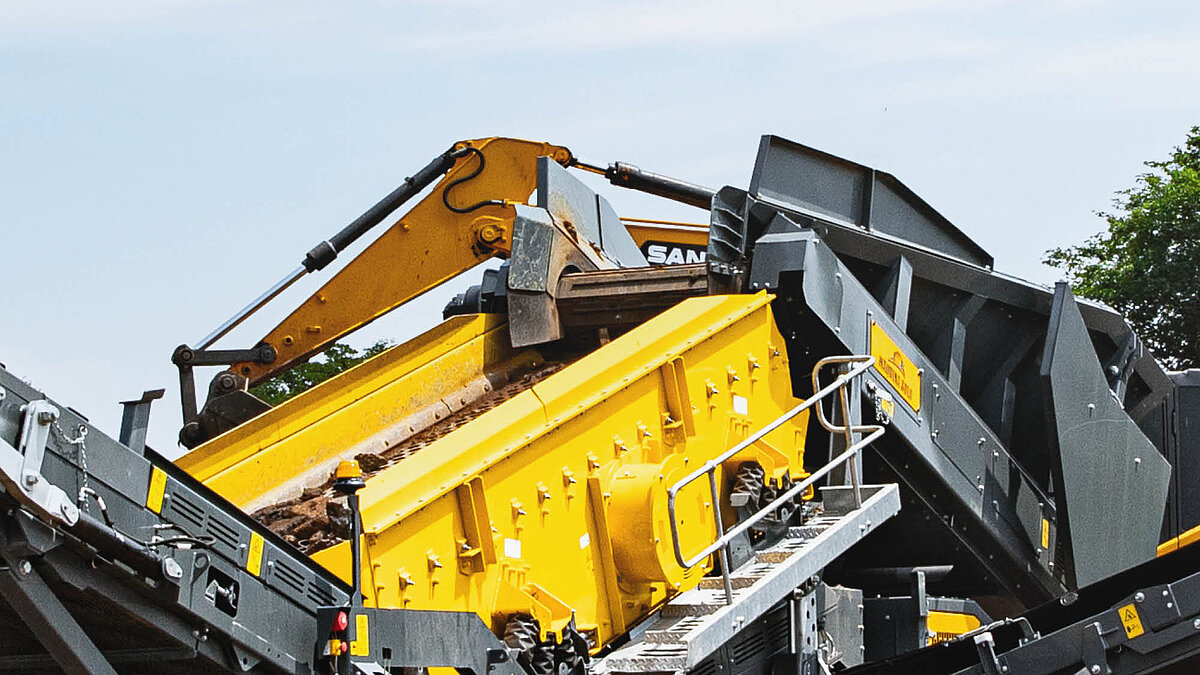
An apron feeder is built like a bulldozer's tracks. It is made of chains, rollers, and sprockets. The steel structure is much more heavy-duty and can handle large rocks, sharp shot rock, or sharp materials (e.g., reinforced material).
Pros:
➕ Built from steel
➕ Not prone to slips
➕ It can take heavy and sharp loads
➕ Better for bark and mulch applications
➕ Wear takes a lot longer
Cons:
➖ Bigger upfront investment
➖ Slow moving
➖ Can be worn out by very wet fine material
➖ Can have some leakage of fines
Belt Feeders

A conveyor belt is most common among scalping screens. It moves material using an endless rubber belt. It includes a drive drum, idle drums, and rollers. The belt is consumable and wears over time. Sharp objects in the feed may puncture or splice it, causing premature wear and downtime.
Pros:
➕ Good for wet or dirty material
➕ Better suited for smaller materials
➕ Moves faster
➕ Less upfront Investment
Cons:
➖ Requires more maintenance
➖ Tears with sharp materials
➖ Material may slip on the belt
What feeder type is best for your scalping screen?
An apron feeder is more expensive than a belt feeder but is better suited for primary applications. Wherever you drop big, heavy material with sharp edges from a height, an apron feeder will hold up better. Also, stringy material (e.g. bark, mulch, shingles) prone to slippage can be better conveyed with an apron feeder.
Belt feeders work for various applications and are generally suited for smaller materials that won’t be dropped from a height. They can move material faster but come with the added cost of frequent servicing (e.g., adjust belt tracking, staple splices), and are more prone to damage. They are much better for secondary applications where smaller aggregates that will not be dropped from height are to be considered. They can move material over longer distances much more efficiently. However, they come with the added cost of servicing regularly and are much more prone to damage.
It is worthwhile looking at the assembly underneath the conveyor. An impact bed tends to hold up much better than impact rollers because material can’t go through easily.
To put everything into perspective
The right feeder type depends on your application and the material you screen on a day-to-day basis. A belt feeder works in most applications. Apron feeders must justify their added costs and should be installed if the application demands an apron feeder.
